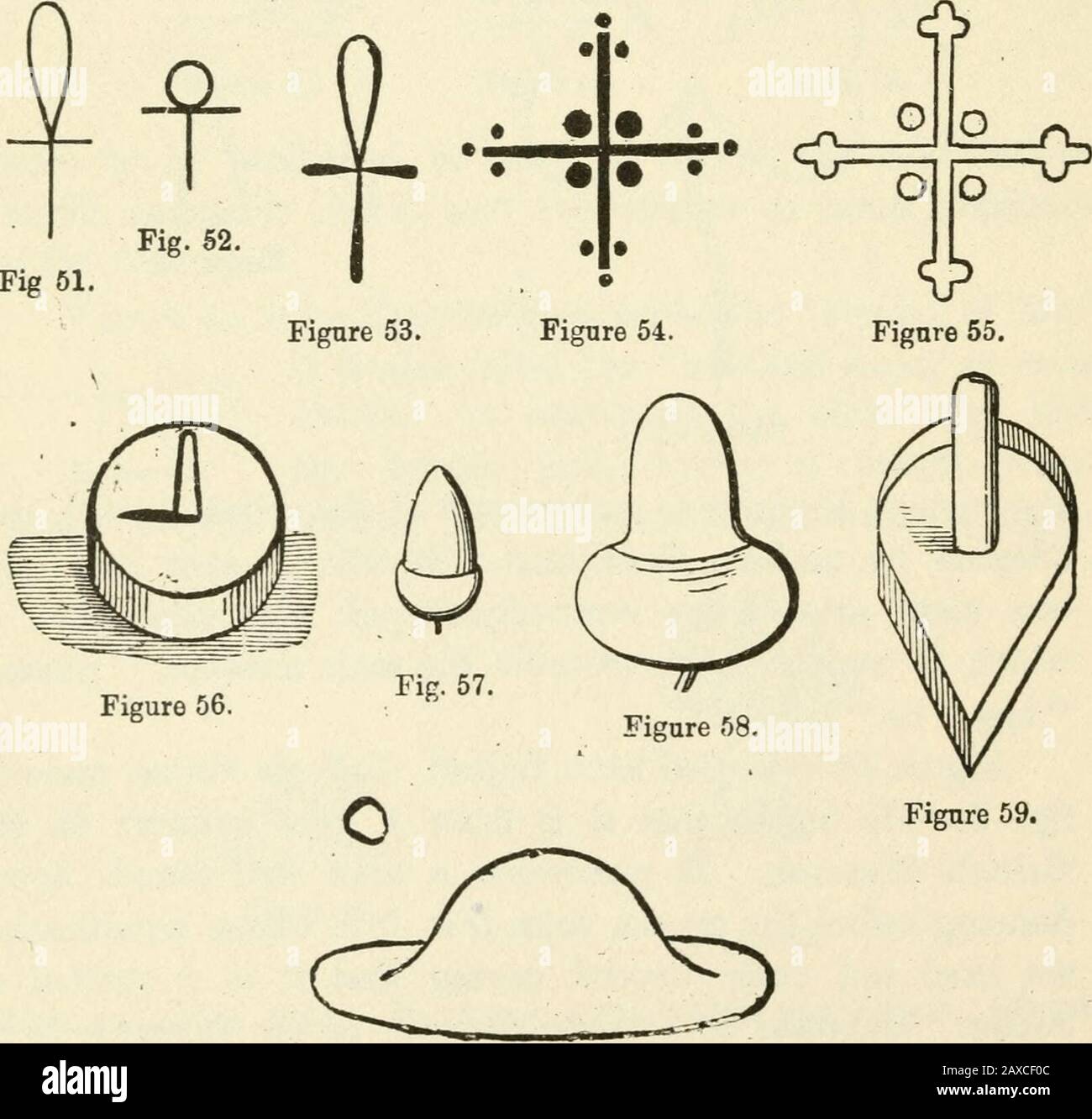Ancient pagan and modern Christian symbolism . Figure 50. graphic rnanner the meaning of the emblems in question,and how the lilies of France had a Pagan origin.. Figure 59. Figure 30, 47 Figitres 51 to 60 are various representations of the unionof the four, the arba, the androgyne, or the linga-yoni. Figure 61. In modern Christian art thissymbol is called vesica piscis, and is sometimessurrounded with rays. It commonly serves asa sort of framework in which female saints areplaced, who are generally the representatives ofthe older Juno, Ceres, Diana, Aenus, or otherimpersonations of the femini

Image details
Contributor:
The Reading Room / Alamy Stock PhotoImage ID:
2AXCF0CFile size:
7.1 MB (218.2 KB Compressed download)Releases:
Model - no | Property - noDo I need a release?Dimensions:
1617 x 1545 px | 27.4 x 26.2 cm | 10.8 x 10.3 inches | 150dpiMore information:
This image is a public domain image, which means either that copyright has expired in the image or the copyright holder has waived their copyright. Alamy charges you a fee for access to the high resolution copy of the image.
This image could have imperfections as it’s either historical or reportage.
Ancient pagan and modern Christian symbolism . Figure 50. graphic rnanner the meaning of the emblems in question, and how the lilies of France had a Pagan origin.. Figure 59. Figure 30, 47 Figitres 51 to 60 are various representations of the unionof the four, the arba, the androgyne, or the linga-yoni. Figure 61. In modern Christian art thissymbol is called vesica piscis, and is sometimessurrounded with rays. It commonly serves asa sort of framework in which female saints areplaced, who are generally the representatives ofthe older Juno, Ceres, Diana, Aenus, or otherimpersonations of the feminine element in crea-tion. We should not feel obliged to demon-strate the truth of this assertion if decency permitted us toreproduce here designs which naughty youths so frequentlychalk upon walls to the disgust of the proper part of thecommunity. We must, therefore, have resort to a religiousbook, and in a subsequent figure demonstrate the meaningof the symbol unequivocally. Figure 62 represents one of the forms assumed by the